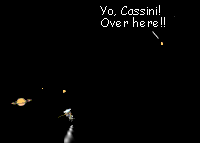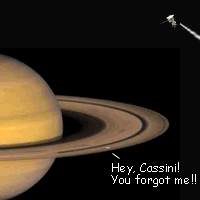 |
| In the summer of 2004, Cassini will arrive in Saturn's neighborhood | 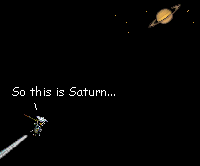 |
 |
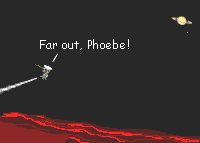 | First the spacecraft will pass near the farthest known moon, Phoebe. This will be Cassini's only chance to see this small moon, it is so much farther from Saturn than the next one in. |
 |
| At last Cassini will approach the great ringed planet itself! Cassini will cross the ring plane by flying through a gap in the outer rings. | 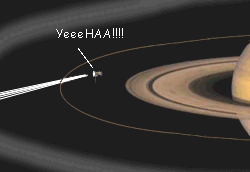 |
 |
| Then Cassini will fire its engine for about 90 minutes, to slow down and put itself in orbit! |
 |
 |
 |
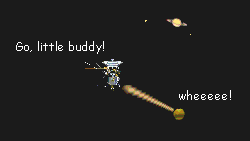 | A few months later, Cassini will release the Huygens probe, which will then begin its flight to Titan. |
 |
| Once it reaches the large moon, Huygens will dive into Titan's atmosphere and parachute to the surface. Cassini will fly overhead and keep contact with Huygens, to transmit to Earth the pictures and other data the probe sends back. | 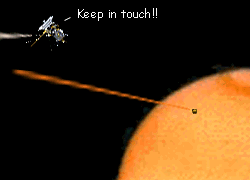 |
 |
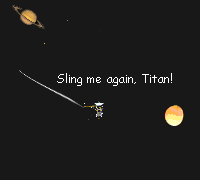 | Cassini will then explore the other moons, each time returning to Titan's neighborhood for a course-altering "gravity assist." Titan will sling Cassini in a slightly different path each time, so we can explore Saturn's north and south poles and the surfaces of as many of the smaller moons as possible. |
 |
| Cassini's main mission will take it around Saturn about 75 times, and on every orbit, Cassini will fly close to a moon every 8 to 120 days, depending on where the next moon is. | 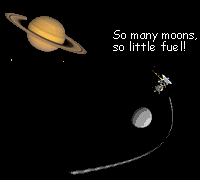 |
 |
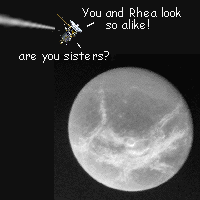 | Through Cassini, all Earth will get closely acquainted with the long, white wisps on Dione and Rhea... |
 |
| Tethys' fabulous, moon-encircling canyon... | 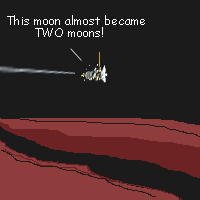 |
 |
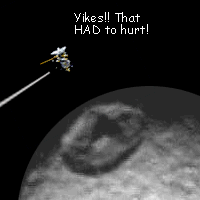 | Mimas' huge crater... |
 |
| Enceladus' smooth, bright, resurfaced plains... | 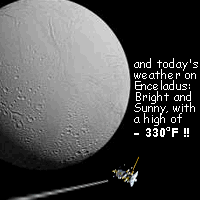
|
 |
| and perhaps even some new moons!
|
 |
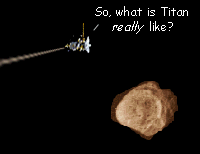 | Cassini will check out tumbling Hyperion, a moon tossed around by nearest neighbor Titan's strong gravitational pull... |
 |
| And probe Iapetus and its strange dark and light sides, maybe solving the long-standing mystery of just what Iapetus is made of. | 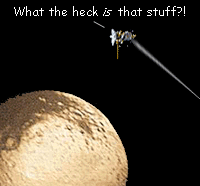 |
 |
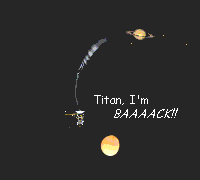 | Each time the spacecraft will also swing by Titan. Cassini will get pretty close to Titan about 45 times. |
 |
| Cassini will check out the poles of Saturn and pass over the tops of a few of the moons... | 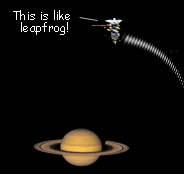 |
 |
| And, of course, Cassini will show us every bit of the gorgeous rings! |
 |
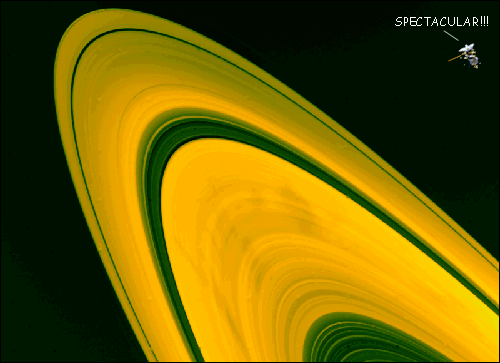 |
 |
| By 2008, Cassini's main mission will be complete. But if the spacecraft is healthy and still has enough fuel, there's no telling what Cassini will do next! More moon visits? Go check out an asteroid? Perhaps go explore another planet? We'll just have to wait and see!!
|
 |
 |


